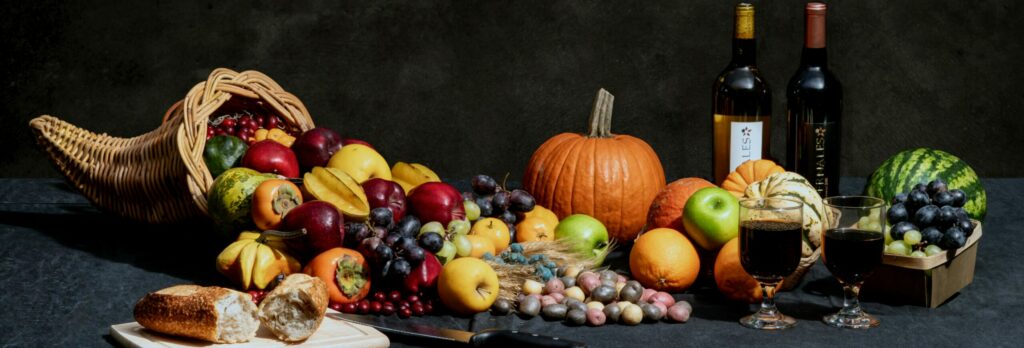It is a fact well known among event planners that, whether you like it or not, and whether you have the budget for it or not, your catering can make or break your event. The more “advanced” your audience is (higher income, high standing job title…), the more they will expect to feel taken care of with fresh, delicious, expensive food.
However, offer high end catering to students or at charity events and you might be playing against yourself. You may want to look into what your catering projects about yourself and how it reflects your values, in order to find the right balance between a delicious and classy catering, and an affordable one.
But we are not here to discuss the success ratings of your event’s catering. We are here to tackle another equally, if not more, important aspect of catering: its environmental footprint.
Really, it is rather simple. Your food has two main sources of carbon footprint: Production processes; and Transport.
While often advertised or misconceived as the main source of your food’s carbon footprint, transport turns out to be rather minimal. Of course, you will (theoretically) have a better carbon footprint if you buy potatoes from your own country than if you ship them across oceans.
Be that as it may, while a mango may grow naturally and without much effort in South East Asia, it is highly unlikely to grow in Northern Europe without the CO2-intensive help of a greenhouse. Hence, it may actually be more sustainable, in Belgium for instance, to buy a mango from Thailand than a mango from the Netherlands, as the greenhouse gas (GHG) emissions of transport across the world would likely be lower than those, ironically, of a greenhouse.
Therefore, to achieve the most sustainable catering for your event, look for seasonal, local produce, aside from it being grown organically, of course.
As with produce, the impact of meat and dairy production is mostly linked to production processes, and not to transport. Livestock farming requires the use of land, water and feed, which in turn requires land and water. And that is not counting the various energy intensive processing and transport. Ruminants, like cows and sheep, are especially bad as they emit important amounts of methane, a potent GHG, making pork and poultry less unsustainable types of meat. Dairy being an animal by-product, its emissions include those of livestock farming. That does mean, for instance, that you can reduce the impact of your meat consumption by consuming meat from dairy cows instead of beef cattle (emissions from a cow that only gives meat after multiple years can not be spread over as many products as those of a cow that also produced milk and the ensuing dairy products like yogurt and cheese).
When planning your catering, try out some vegan/vegetarian options, if you want to drastically reduce your carbon footprint!
Last but not least, no amount of reduction of your GHG emissions is going to compensate for food waste. It is important to plan your event catering amount correctly and manage it as well: you don’t need food for 100 when you have 50 attendees. if you do end up with too much food on your hands, look into options such as TooGoodToGo, where you can 1) get cheaper food and save it from going in the trash, and 2) save your own food waste from going in the trash by selling it at a discount through the platform! Another idea is to give away your surplus to your team, your attendees, the venue staff, or donate to a charity like soup kitchens. You can also decrease food waste by managing your food onsite, by unpacking food items as they get consumed, instead of opening everything at once.
On a side note, there are many options for sustainable drinks that may delight your audience with their novelty and, often, their great taste!
In a nutshell, when it comes to food, look into buying seasonal, local, organic produce, and avoid any animal-related products. Always think of decreasing your food-waste by simply planning your amounts correctly, based on the amount of attendees.
It may sound a little overwhelming to have to think of so much just for your catering, particularly with the lack of a “sustainability score” badge on supermarket products. But many caterers are popping up around the world with evermore sustainable offers. At MAI, it is up to you to choose your caterer, sustainable or not. And don’t hesitate to challenge them a little if you don’t find it sustainable enough. It’s for the good of the planet, and eventually the people, after all.


Recent Comments